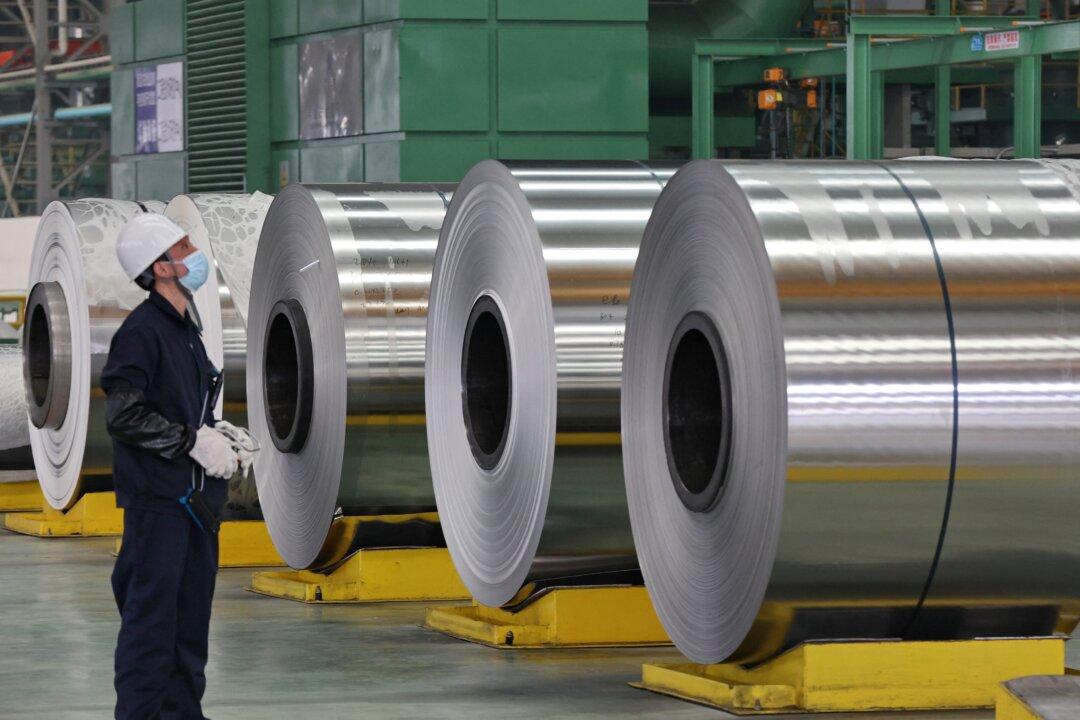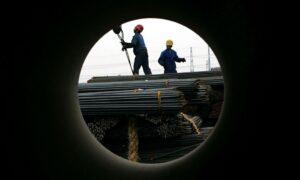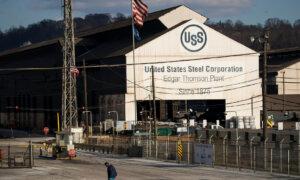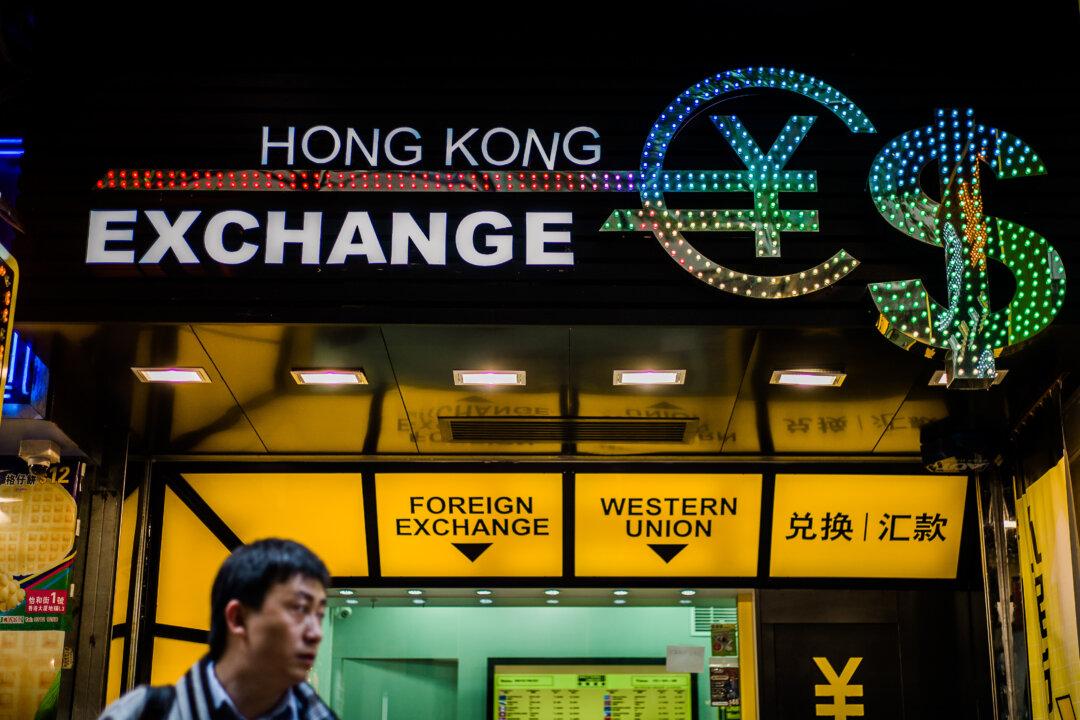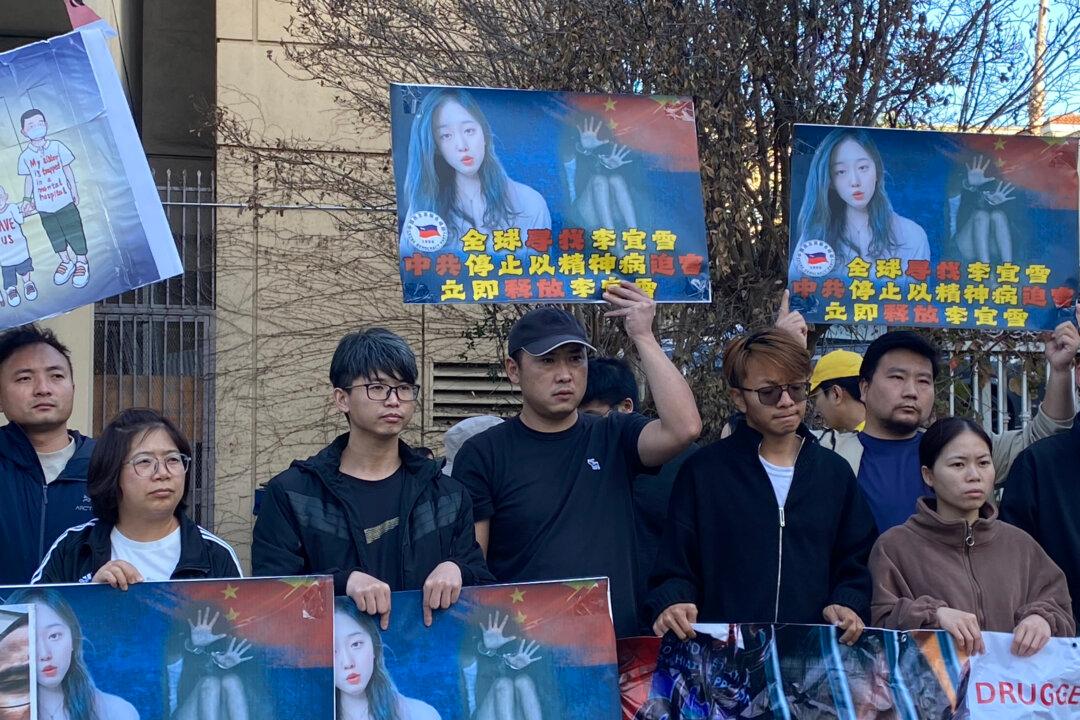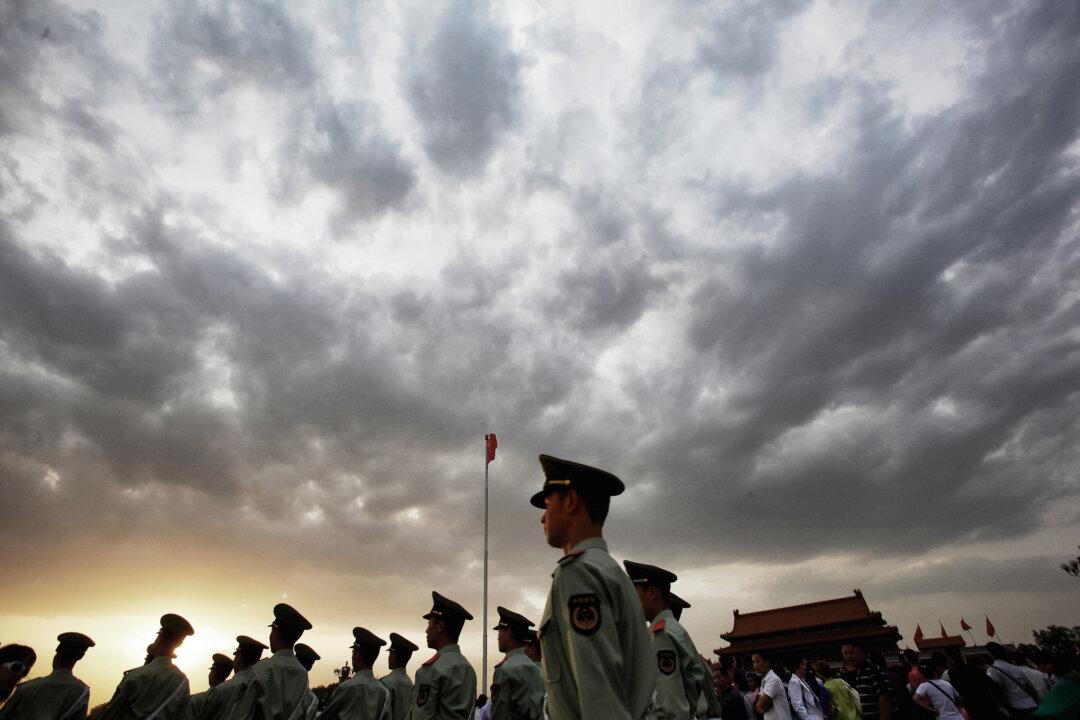China’s steel production oversupply has been a problem for a long time. Instead of reducing production, the Chinese Communist Party (CCP) has only increased it. However, domestic demand continues to decrease, and the surge in China’s cheap steel exports has sparked a global backlash.
Last year, China’s net crude steel exports reached 856.81 million metric tons, a year-on-year increase of 64.2 percent, and steel exports reached 902.64 million tons, up 36.2 percent year-on-year, reaching the highest level since 2016.
The Wall Street Journal reported that countries such as Brazil, Vietnam, India, the UK, the Philippines, and Turkey are conducting anti-dumping investigations against China.
On April 20, Chile, which has a free trade agreement with China, announced temporary tariffs of 25 percent to 34 percent on imported steel from China. Subsequently, Chile’s largest steel manufacturer, Huachipato, resumed production. The factory announced an indefinite suspension of production on March 20 since it could not compete with Chinese steel products, which were about 40 percent cheaper.
President Joe Biden recently called for increasing tariffs on Chinese steel and aluminum from the current 7.5 percent to 25 percent. He told steelworkers in Pittsburgh that Chinese steel manufacturers are not competing but cheating.
Shrinking Domestic Demand
While facing global backlash, domestic steel demand in China continues to shrink. The collapse of China’s real estate sector has led to a sharp decline in steel demand, and due to financial constraints in China’s local governments, many infrastructure projects have been halted.According to Frederic Neumann, chief Asia economist at HSBC, China’s real estate construction usually accounts for about 25 percent of global steel demand in a typical year.
A report released by the China Metallurgical Industry Planning and Research Institute at the end of last year stated that China’s steel demand was expected to decrease by 3.3 percent year-on-year in 2023, with a further decline of 1.7 percent expected this year.
In the first two months of this year, the ferrous metals processing industry, representing China’s steel industry, reported a total loss of 14.61 billion yuan (US$2 billion), the highest loss among all industrial sectors.
Anti-Market Policies
The CCP has employed aggressive tactics to expand its steel industry, seeking to achieve a monopolistic position in the global steel industry.In Sept. 2016, the CCP’s State-owned Assets Supervision and Administration Commission of the State Council (SASAC) announced that Baosteel Group and Wuhan Iron and Steel Corporation would implement a joint reorganization and be renamed China Baowu Steel Group, commonly known as Baowu. In the following years, Baowu successively acquired 14 steel producers across China, becoming the world’s largest steel manufacturer.
Due to the impact on the special interests of many local government officials and private enterprises, many executives of steel companies were arrested during the reorganization of steel manufacturers into one giant conglomerate, but the CCP spared no effort to achieve its goals.
These moves show that the CCP is actively expanding its large state-backed steel producers and eliminating competition from private competitors.
Global Ambitions
Despite facing global backlash, the CCP continues to increase steel production capacity as a part of its global strategy.Mr. Wang believes that the CCP has always had global ambitions. “The biggest danger now is that if the CCP wants to invade Taiwan, risking possible armed conflict with the United States and Japan. In that case, the production of weapons and ammunition will be a top priority,” he said.
He explained that during World War II, the United States was the world’s largest industrialized country, and its huge industrial capacity laid a strong foundation for the war. In the Russia-Ukraine War, it can be seen that both sides are quite exhausted. Western ammunition depots have been nearly exhausted, and Russia had to ask North Korea for supplies. This shows that modern warfare requires a great deal of industrial and manufacturing capabilities.
“China’s manufacturing industry accounts for about one-third of the world’s total,” said Mr. Wang. “The United States, Japan, and Europe combined do not have as much as China. If the CCP wants to continue developing its manufacturing industry, it must rely on the steel industry. So, China’s steel overcapacity is not just an economic issue but a strategic consideration. Once a war breaks out, the CCP hopes that industrial support for the war will far exceed that of the United States, Japan, and Europe.”
